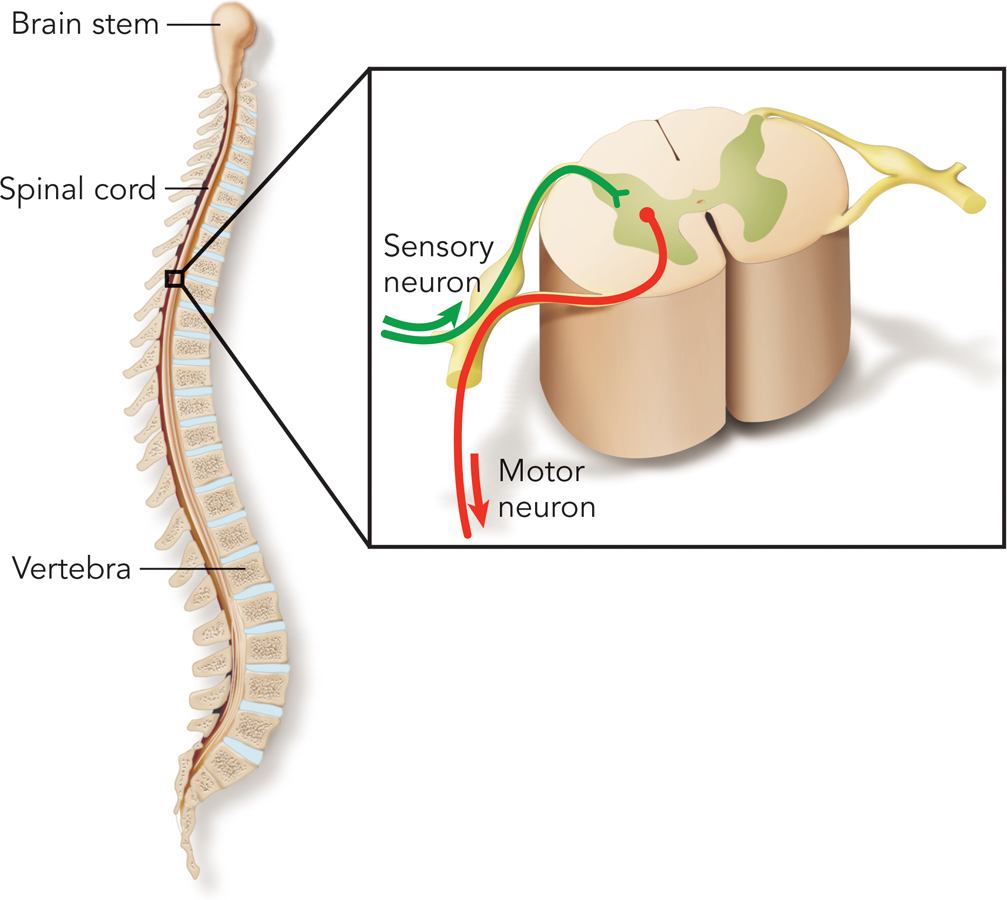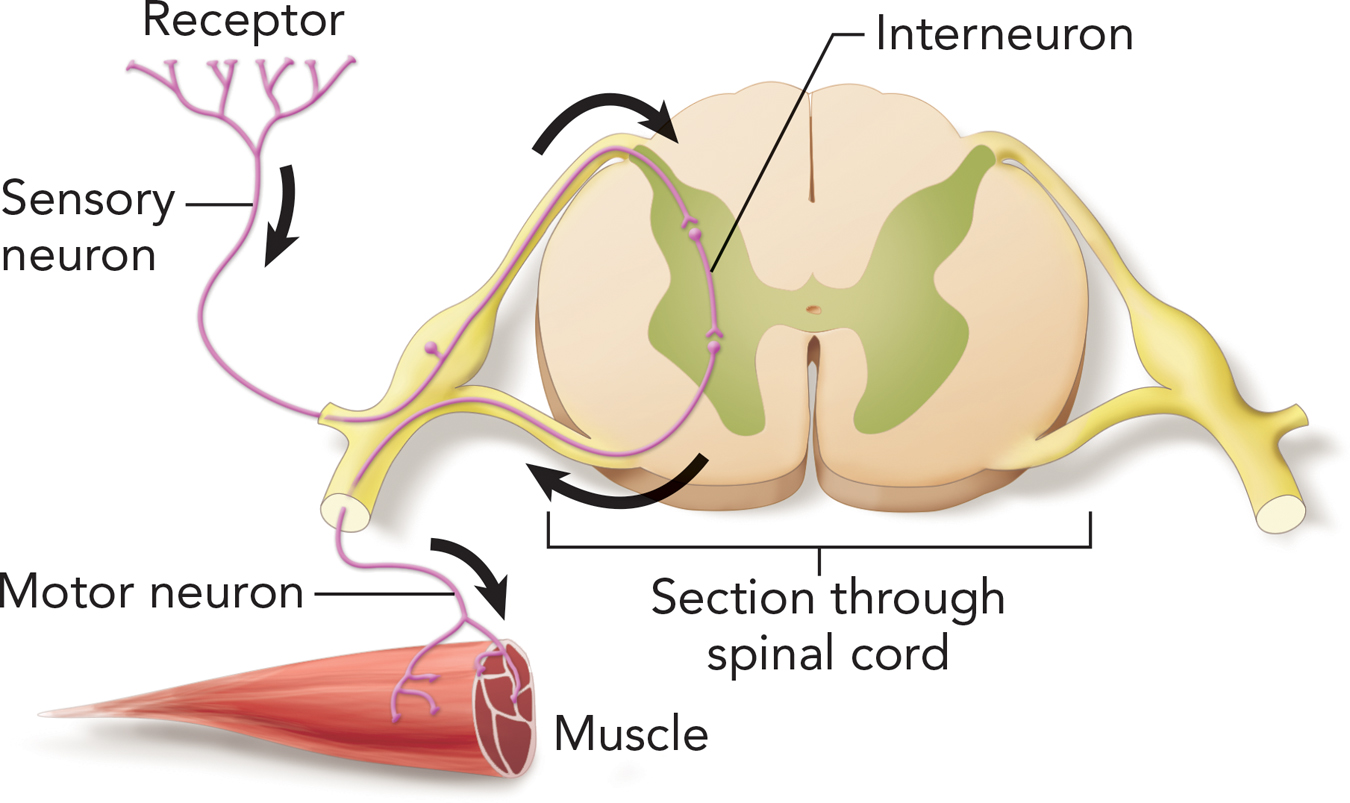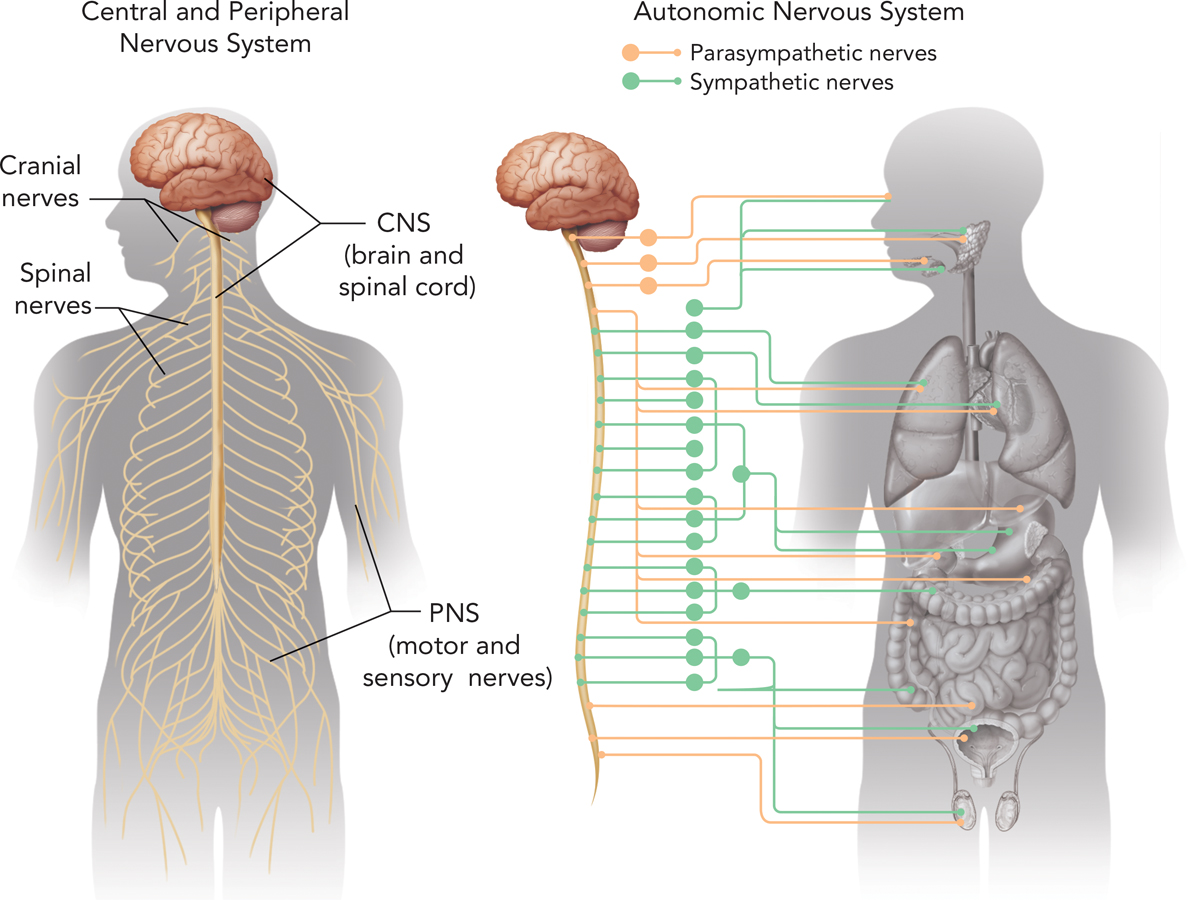3.3 The Nervous System
Your psychological life depends on not only your brain, but also communications systems that link your brain to the rest of your body. The body’s primary communication system is the nervous system, the complete collection of neurons that transmits signals among the parts of the body.
The brain, our focus so far in this chapter, is one part of the overall nervous system. Let’s learn about the rest of the nervous system by examining its two main parts, the central and peripheral nervous systems.
Central Nervous System
Preview Question
Question
 What are the structures of the central nervous system and their functions?
What are the structures of the central nervous system and their functions?
The central nervous system gets its name from its location; it is found in the center of the body. The central nervous system consists of two main parts, the brain and the spinal cord. We have already discussed the brain, so let’s look at the spinal cord.
The spinal cord is a bundle of neurons and glial cells that extends from the brain stem down to the bottom of the spine. These cells run through the bones of the spine, which protects them from damage (Figure 3.23).

The spinal cord participates in two-
In one direction, information from the environment is directed into the spinal cord, where it is then passed on to the brain. Specifically, sensory neurons, which respond to external stimuli, send messages about the environment into the spinal cord.
In the other direction, the brain’s instructions for the body are sent through the spinal cord. After outgoing messages from the brain reach the spinal cord, motor neurons send out signals to the body’s muscles. These signals enable the brain to control bodily movement.
Some bodily actions do not require signals that are sent to the brain. People possess reflexes, which are automatic, involuntary responses to external stimulation (Figure 3.24). For example, the leg movement that occurs when a doctor taps you on the knee during a physical examination is a reflex. (By comparison, play-

WHAT DO YOU KNOW?…
Question 12
For each of the “answers” below, provide the question.
b. What are motor neurons?
c. What are reflexes?
Peripheral Nervous System
Preview Question
Question
 What are the structures of the peripheral nervous system and their functions?
What are the structures of the peripheral nervous system and their functions?
The peripheral nervous system is found, as the name suggests, in the periphery of the body—
There are two ways of classifying the various parts of the peripheral nervous system. One method is by their physical location. Cranial nerves are those parts of the peripheral nervous system found in the head. These nerves extend out from the bottom of the brain and connect to structures in the head, such as the eyes, nose, and tongue. Spinal nerves extend from the spinal cord to the body’s neck, torso, and limbs (Figure 3.25).

The second way of classifying the nerves of the peripheral nervous system is functionally, that is, in terms of what they do. The somatic nervous system provides the brain-
The autonomic nervous system contains two divisions, that is, two subsystems that perform different tasks. The sympathetic nervous system prepares you for action. It activates the biological systems required for rapid activity, such as increased heart rate. This activation enables “fight” or “flight” responses—
113
But imagine what happens after you pass to your teammate: She scores, the game ends, your team wins, and now your body responds differently. You relax, rest, and may find that you need a bathroom break. Your body’s parasympathetic nervous system is swinging into action. The parasympathetic nervous system is the part of the autonomic nervous system that maintains normal functioning of the body when you are not under threat or stress. It activates “basic housekeeping” functions such as digestion and elimination of bodily waste, and reduces heart rate and blood pressure to low, baseline levels of activity.
When was the last time your sympathetic nervous system was activated? What did its activation feel like?
The different roles of the sympathetic and parasympathetic nervous systems explain everyday examples in which psychological factors influence physical functioning. For instance, the demands of travel can be stressful, and travelers often experience “traveler’s constipation.” During the stress of travel, the sympathetic nervous system is relatively more active than usual—
WHAT DO YOU KNOW?…
Question 13
The division of the peripheral nervous system that enables you to control your body’s movements is the YZ/GsVnwDzz3mSYSnervous system. The autonomic nervous system is divided into two subsystems: the 7+SfwRE2YMwWraVbyQj9Iw== nervous system, which, when activated, enables “fight or flight” responses, and the gErXVQeEVQ1oYfNvzrk7dvJJj4g= nervous system, which restores normal functioning functioning when a threat is no longer present.